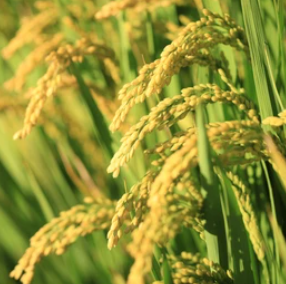Information report for OsRAA1
Gene Details
|

|
Functional Descriptions
- Constitutive expression of OsRAA1 under the control of maize (Zea mays) ubiquitin promoter resulted in phenotypes of reduced growth of primary root, increased number of adventitious roots and helix primary root, and delayed gravitropic response of roots in seedlings of rice (Oryza sativa), which are similar to the phenotypes of the wild-type plant treated with auxin.
- Moreover, a colocalization assay has shown that OsRAA1 is expressed predominantly at spindles during cell division.
- Here, the OsRAA1 (Oryza sativa Root Architecture Associated 1) gene has been characterized molecularly.
- Data of in situ hybridization and OsRAA1::GUS transgenic plant showed that OsRAA1 expressed specifically in the apical meristem, the elongation zone of root tip, steles of the branch zone, and the young lateral root.
- With overexpression of OsRAA1, initiation and growth of adventitious root were more sensitive to treatment of auxin than those of the control plants, while their responses to 9-hydroxyfluorene-9-carboxylic acid in both transgenic line and wild type showed similar results.
- These data suggested that OsRAA1 as a new gene functions in the development of rice root systems, which are mediated by auxin.
- A positive feedback regulation mechanism of OsRAA1 to indole-3-acetic acid metabolism may be involved in rice root development in nature.
- Overexpression of OsRAA1 causes pleiotropic phenotypes in transgenic rice plants, including altered leaf, flower, and root development and root response to gravity.
- The expression of OsRAA1 in fission yeast also induced metaphase arrest, which is consistent with the fact that OsRAA1 functions through a conserved mechanism of cell cycle regulation.
- These results suggest that ubiquitination and proteasomic proteolysis are involved in OsRAA1 degradation, which is essential for the onset of anaphase, and that OsRAA1 may modulate root development mediated by the ubiquitin-proteasome pathway as a novel regulatory factor of the cell cycle.
- OsRAA1 constitutive expression also caused longer leaves and sterile florets at the last stage of plant development.
- Previous studies have identified rice (Oryza sativa) ROOT ARCHITECTURE ASSOCIATED1 (OsRAA1) as a regulator in root development.
- Here, we show that OsRAA1-overexpressed transgenic rice showed reduced primary root growth, increased numbers of cells in metaphase, and reduced numbers of cells in anaphase, which suggests that OsRAA1 is responsible for limiting root growth by inhibiting the onset of anaphase.
- Analysis of northern blot and GUS activity staining of OsRAA1::GUS transgenic plants demonstrated that the OsRAA1 expression was induced by auxin.
Functional Keywords
- seedling , cell-division , root , leaf , cell-cycle , primary-root , lateral-root , adventitious-root , sterile , root-architecture , root-development , growth , architecture , flower , auxin , meristem
Literature and News
- Overexpression of OsRAA1 causes pleiotropic phenotypes in transgenic rice plants, including altered leaf, flower, and root development and root response to gravity . DOI: 10.1104/pp.104.041996 ; PMID: 15247372
- Rice ROOT ARCHITECTURE ASSOCIATED1 binds the proteasome subunit RPT4 and is degraded in a D-box and proteasome-dependent manner . DOI: 10.1104/pp.108.125294 ; PMID: 18701670
Gene Resources
- UniProt: Q9LGE3
- EMBL: AK070626, AP002525, AP008207
- AlphaFoldDB: Q9LGE3
- EnsemblPlants: Os01t0257300-01
- Gramene: Os01t0257300-01
- KEGG: dosa:Os01g0257300
Sequences
cDNA Sequence
- >LOC_Os01g15340.1
TCCATCCACCCATAGCTATCTCTAGCTAGCTTGCACATTCTTCATTCTTCTTGCAATCAGAGCTAGAGAAAAAGAGTTTGAGAGAGATCTAAGAGATGTCAGGGGTTTGGGTGTTCAAGAACGGGGTGGTGAGATTGGTGGAGAAGCAGCAGGCGACGGCGGGGACGGCGGTGGCGGGAGGGAGGAGGAAGGCGCTGGTGCACACGCCGAGCGGGCAGGTGGTGTCGTCGTACGCGGCGCTGGAGGCGCGGCTGACGGCGCTCGGGTGGGAGCGCTACTACGAGGACCCCTCCCTCTTCCAGTTCCACAAGCGTGGCTCCCTCGACCTCATCTCCCTCCCCGCCGACTTCTCCGCCTTCTCCTCCGTCCACATGTACGACATCGTCGTCAAGAACCGCGACTCCTTCCGCGTCGTCGACGCCTAAATTGACCTATGTATAGGCTCGCATGCATGCAAGGTAGACGACCATCCACCTTGCATGCATGCAGGCTATCATTCTCTCTTCGTCTCCGTCTTCGTCTTTCATCTTTGTTGTGGTGTGTGTGAATTTATTATACTTCTTATGACTGTGTGTGTGACTGTGTGAGAGTTCATGGAGAGTGATGAGTAGTGGTATACATATGTGTCGTCGCTGATCGATTTGGTTTATTACCTTGTGGGTGGGTATTAATTATCAGCAGTGTGTTATATCAATTGCTTACTTGTATGTGTATCATGTACATGAGTGAGTGTGGCTGATGCATATATATAGAGGTCTTTAATAATTATGTACTATATATTTGTGTAGCTAGATATATGTACTACCTGCTCTGCTATATGTAATAATGTACGCATGTTTTTGCTTATAATTAATCATATGTTGATCTGTATATGCTTATATGCAGGTGCGAGT
CDS Sequence
- >LOC_Os01g15340.1
ATGTCAGGGGTTTGGGTGTTCAAGAACGGGGTGGTGAGATTGGTGGAGAAGCAGCAGGCGACGGCGGGGACGGCGGTGGCGGGAGGGAGGAGGAAGGCGCTGGTGCACACGCCGAGCGGGCAGGTGGTGTCGTCGTACGCGGCGCTGGAGGCGCGGCTGACGGCGCTCGGGTGGGAGCGCTACTACGAGGACCCCTCCCTCTTCCAGTTCCACAAGCGTGGCTCCCTCGACCTCATCTCCCTCCCCGCCGACTTCTCCGCCTTCTCCTCCGTCCACATGTACGACATCGTCGTCAAGAACCGCGACTCCTTCCGCGTCGTCGACGCCTAA
Protein Sequence
- >LOC_Os01g15340.1
MSGVWVFKNGVVRLVEKQQATAGTAVAGGRRKALVHTPSGQVVSSYAALEARLTALGWERYYEDPSLFQFHKRGSLDLISLPADFSAFSSVHMYDIVVKNRDSFRVVDA*